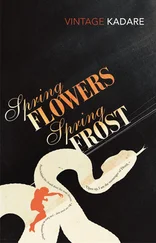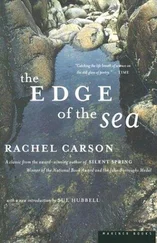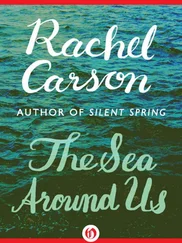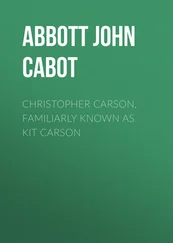Modern insecticides are still more deadly. The vast majority fall into one of two large groups of chemicals. One, represented by DDT, is known as the “chlorinated hydrocarbons.” The other group consists of the organic phosphorus insecticides, and is represented by the reasonably familiar malathion and parathion. All have one thing in common. As mentioned above, they are built on a basis of carbon atoms, which are also the indispensable building blocks of the living world, and thus classed as “organic.” To understand them, we must see of what they are made, and how, although linked with the basic chemistry of all life, they lend themselves to the modifications which make them agents of death.
The basic element, carbon, is one whose atoms have an almost infinite capacity for uniting with each other in chains and rings and various other configurations, and for becoming linked with atoms of other substances. Indeed, the incredible diversity of living creatures from bacteria to the great blue whale is largely due to this capacity of carbon. The complex protein molecule has the carbon atom as its basis, as have molecules of fat, carbohydrates, enzymes, and vitamins. So, too, have enormous numbers of nonliving things, for carbon is not necessarily a symbol of life.
Some organic compounds are simply combinations of carbon and hydrogen. The simplest of these is methane, or marsh gas, formed in nature by the bacterial decomposition of organic matter under water. Mixed with air in proper proportions, methane becomes the dreaded “fire damp” of coal mines. Its structure is beautifully simple, consisting of one carbon atom to which four hydrogen atoms have become attached:
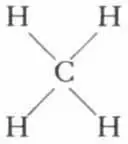
Chemists have discovered that it is possible to detach one or all of the hydrogen atoms and substitute other elements. For example, by substituting one atom of chlorine for one of hydrogen we produce methyl chloride:
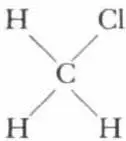
Take away three hydrogen atoms and substitute chlorine and we have the anesthetic chloroform:
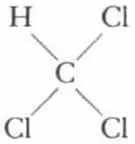
Substitute chlorine atoms for all of the hydrogen atoms and the result is carbon tetrachloride, the familiar cleaning fluid:

In the simplest possible terms, these changes rung upon the basic molecule of methane illustrate what a chlorinated hydrocarbon is. But this illustration gives little hint of the true complexity of the chemical world of the hydrocarbons, or of the manipulations by which the organic chemist creates his infinitely varied materials. For instead of the simple methane molecule with its single carbon atom, he may work with hydrocarbon molecules consisting of many carbon atoms, arranged in rings or chains, with side chains or branches, holding to themselves with chemical bonds not merely simple atoms of hydrogen or chlorine but also a wide variety of chemical groups. By seemingly slight changes the whole character of the substance is changed; for example, not only what is attached but the place of attachment to the carbon atom is highly important. Such ingenious manipulations have produced a battery of poisons of truly extraordinary power.
DDT (short for dichloro-diphenyl-trichloro-ethane) was first synthesized by a German chemist in 1874, but its properties as an insecticide were not discovered until 1939. Almost immediately DDT was hailed as a means of stamping out insect-borne disease and winning the farmers’ war against crop destroyers overnight. The discoverer, Paul Müller of Switzerland, won the Nobel Prize.
DDT is now so universally used that in most minds the product takes on the harmless aspect of the familiar. Perhaps the myth of the harmlessness of DDT rests on the fact that one of its first uses was the wartime dusting of many thousands of soldiers, refugees, and prisoners, to combat lice. It is widely believed that since so many people came into extremely intimate contact with DDT and suffered no immediate ill effects the chemical must certainly be innocent of harm. This understandable misconception arises from the fact that—unlike other chlorinated hydrocarbons—DDT in powder form is not readily absorbed through the skin. Dissolved in oil, as it usually is, DDT is definitely toxic. If swallowed, it is absorbed slowly through the digestive tract; it may also be absorbed through the lungs. Once it has entered the body it is stored largely in organs rich in fatty substances (because DDT itself is fat-soluble) such as the adrenals, testes, or thyroid. Relatively large amounts are deposited in the liver, kidneys, and the fat of the large, protective mesenteries that enfold the intestines.
This storage of DDT begins with the smallest conceivable intake of the chemical (which is present as residues on most foodstuffs) and continues until quite high levels are reached. The fatty storage depots act as biological magnifiers, so that an intake of as little as 1/10 of 1 part per million in the diet results in storage of about 10 to 15 parts per million, an increase of one hundredfold or more. These terms of reference, so commonplace to the chemist or the pharmacologist, are unfamiliar to most of us. One part in a million sounds like a very small amount—and so it is. But such substances are so potent that a minute quantity can bring about vast changes in the body. In animal experiments, 3 parrs per million has been found to inhibit an essential enzyme in heart muscle; only 5 parts per million has brought about necrosis or disintegration of liver cells; only 2.5 parts per million of the closely related chemicals dieldrin and chlordane did the same.
This is really not surprising. In the normal chemistry of the human body there is just such a disparity between cause and effect. For example, a quantity of iodine as small as two ten-thousandths of a gram spells the difference between health and disease. Because these small amounts of pesticides are cumulatively stored and only slowly excreted, the threat of chronic poisoning and degenerative changes of the liver and other organs is very real.
Scientists do not agree upon how much DDT can be stored in the human body. Dr. Arnold Lehman, who is the chief pharmacologist of the Food and Drug Administration, says there is neither a floor below which DDT is not absorbed nor a ceiling beyond which absorption and storage ceases. On the other hand, Dr. Wayland Hayes of the United States Public Health Service contends that in every individual a point of equilibrium is reached, and that DDT in excess of this amount is excreted. For practical purposes it is not particularly important which of these men is right. Storage in human beings has been well investigated, and we know that the average person is storing potentially harmful amounts. According to various studies, individuals with no known exposure (except the inevitable dietary one) store an average of 5.3 parts per million to 7.4 parts per million; agricultural workers 17.1 parts per million; and workers in insecticide plants as high as 648 parts per million! So the range of proven storage is quite wide and, what is even more to the point, the minimum figures are above the level at which damage to the liver and other organs or tissues may begin.
One of the most sinister features of DDT and related chemicals is the way they are passed on from one organism to another through all the links of the food chains. For example, fields of alfalfa are dusted with DDT; meal is later prepared from the alfalfa and fed to hens; the hens lay eggs which contain DDT. Or the hay, containing residues of 7 to 8 parts per million, may be fed to cows. The DDT will turn up in the milk in the amount of about 3 parts per million, but in butter made from this milk the concentration may run to 65 parts per million. Through such a process of transfer, what started out as a very small amount of DDT may end as a heavy concentration. Farmers nowadays find it difficult to obtain uncontaminated fodder for their milk cows, though the Food and Drug Administration forbids the presence of insecticide residues in milk shipped in interstate commerce.
Читать дальше






